You are about to begin a presentation in your workplace superiors’ presence, everything is set, and your laptop refuses to work. You feel out of control, you cannot breathe, you are sweating bullets, and your surroundings are closing in on you! This is how it feels like to have a panic attack.
Panic attacks can grip anybody when life throws them a curveball. Since a panic attack sets in suddenly, people barely get time to formulate a response strategy. It is common to react hastily without thinking when you experience a panic attack.
Panic attacks may lead to confusion, anxiety, a clouded mind, and physical symptoms like pain, excessive perspiration, tightening sensation around the chest, and breathlessness.
While panic attacks affect your entirety, their effects on your mental health are most apparent. Yoga techniques like asanas, meditation, and breathing exercises are known for their beneficial effects on one’s mental wellbeing. (READ more on the effects of Yoga on your mind)
Let us delve deeper into the world of Yoga to understand its utility in curbing the ill effects of a panic attack.
Role Of Yoga During A Panic Attack
Books, online blogs, and other literature discuss the utility of Yoga in maintaining harmony between various aspects of our health. Most people believe in the common misconception that health disorders are organ specific. Contrary to popular belief, any disease can affect your entire wellbeing. While panic attacks affect your psyche the most, they may also harm your spiritual and physical wellbeing in the long run. Yoga has tremendous scope in curbing most of the ill effects of a panic attack on human health.
- Soothing Effect On Nerves
Feeling nervous before, during, or after panic attacks is very common. Yoga postures, breathing techniques, and meditation soothe your jittery nerves. Enhanced nerve functions increase your physical and mental preparedness to handle difficult situations.
- Controls Blood Pressure
Yoga is pivotal in acting on your blood vessels and regulating blood pressure. Your blood pressure will likely surge when your nervous system acts up during a panic attack. This physiological disturbance is damaging to your mind as well as your body. Practice Yoga daily to strengthen your blood vessels and maintain healthy blood pressure levels.
- Prevents Excess Sweating
Excessive sweating is a common symptom during panic attacks and causes physical discomfort. Excess sweating may also put you in an awkward situation if a panic attack hits you while you are in a public setting. There are specific Yoga postures that regulate your perspiration cycle, which you can practice regularly for good health.
- Mental Calm
Your mental state is far from calm and collected when you are in the middle of a panic attack. Deep breathing techniques and meditation are great ways to calm your mind instantly. You can quickly gain control of the situation by thinking clearly if you practice Pranayama regularly.
- Muscle Relaxation
During a panic attack, you may tend to feel a tightening sensation and pain in your chest, limbs, or throat. Yoga postures make your muscles supple, robust, and flexible. A muscular physique allows you to recover quickly from any ill effects of a panic attack.
Yoga Poses For Panic Attacks
Yoga poses may assist in various ways to control panic attacks. Some postures may enhance the blood flow to your brain, while some may bring down your anxiety levels; some may focus on your blood pressure, while some relax your muscles. Let us learn five Yoga postures you can perform daily to prevent panic attacks.
- Balasana
Balasana is a forward-bending Yoga posture that enhances your brain functions by increasing the blood flow to your head. Balasana is named ‘child’s pose’ because one resembles a sleeping child while performing the posture.
To perform Balasana
- Sit with your legs folded underneath so that your big toes are touching and your butt is nestled between your heels. Your knees should be spread apart, so they are as wide as your hips.
- Inhale deeply, and start bending forward from your waist till your abdomen and chest touch your thighs.
- Bend your neck gently and touch your forehead to the ground.
- Glide your hands forward till they stretch out in the front. Keep both palms pressed against the ground.
- Allow your shoulders, chest, and torso to fall naturally without straining them.
- Adjust your back to avoid straining your muscles, and continue breathing throughout the asana.
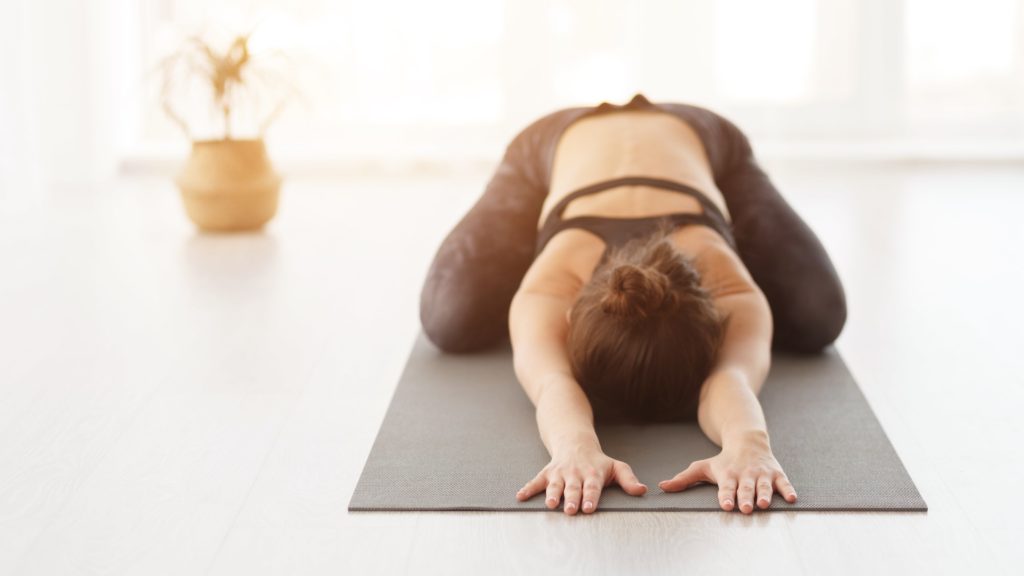
Balasana is a resting pose that adequately rejuvenates your mind and body. The Yoga pose has a calming effect on your brain and regulates blood pressure.
2. Dhanurasana
Dhanurasana is also known as the bow pose because your body resembles an archer’s bow during the Yoga posture. Dhanurasana is good for stretching your back and limb muscles.
To perform Dhanurasana
- Lie down with your belly and chest touching the floor and relax your limbs.
- Keep some distance between your knees for better support during Dhanurasana. Extend your ankles, so the top of your feet touches the ground.
- Bend both knees and firmly grasp your ankles without bending your elbows.
- Gradually heave your chest, shoulders, neck, and head off the floor.
- In the final pose of Dhanurasana, balance your body weight equally on your thighs and torso, which are pressed firmly against the floor.
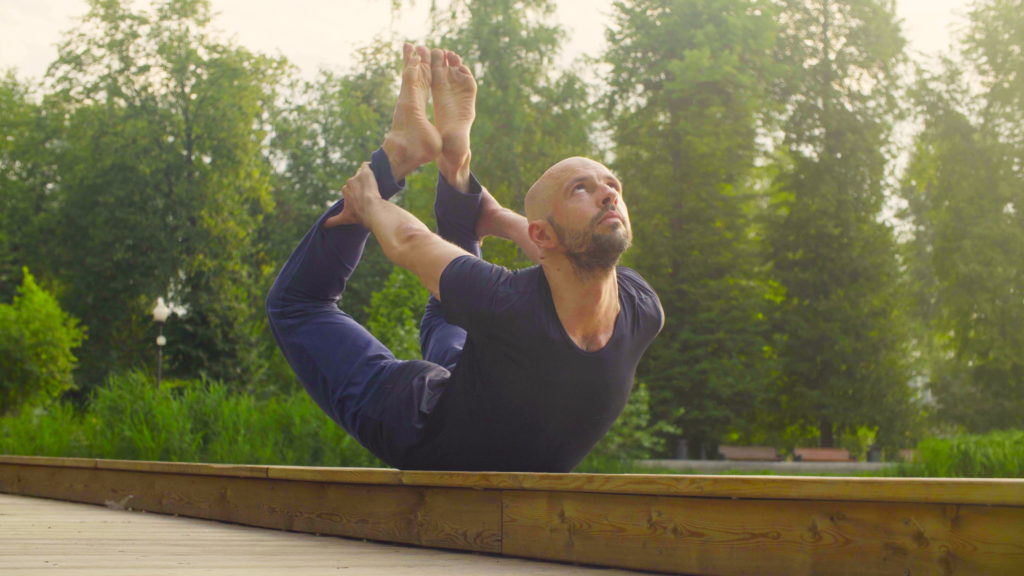
Continue regular breathing throughout Dhanurasana. The Yoga posture stretches and tones your lung muscles which help to curb any breathing problems. Dhanurasana is aimed at loosening your tight muscles and making them more supple.
3. Virasana
Virasana, or the hero pose, is a great way to unwind after work or at home. The sitting Yoga pose may seem easy, but it stretches your limb muscles adequately.
To perform Virasana
- Kneel on the floor and lower yourself till your shin and butt touch the ground.
- Extend your ankles so that the top of your feet touch the ground.
- Keep some distance between your knees by keeping both shins parallel.
- Pull your chest and shoulders backward to get into the Virasana pose.
- Grip both knees firmly and pull them slightly back without changing your stance.
- Look straight ahead and continue breathing for 15-30 seconds while maintaining the Virasana pose.
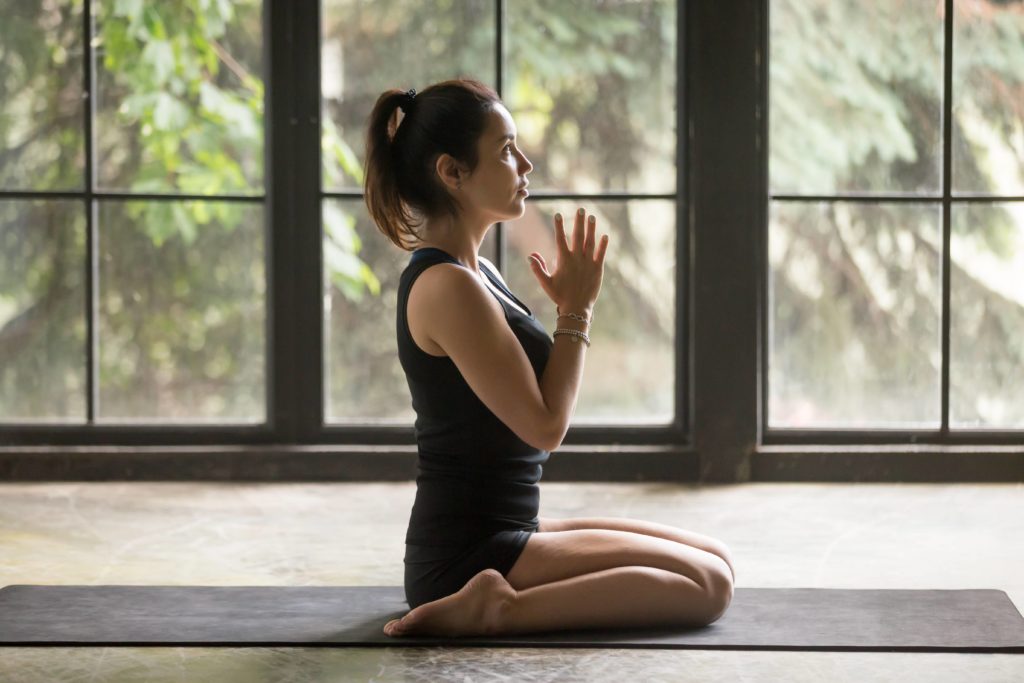
The above reference image for Virasana shows an alternate pose where you may keep your hands joined as if in prayer.
Virasana is the perfect antidote to tired and aching legs and may be performed even during pregnancy. Virasana is known for its positive effects on regulating blood pressure.
4. Baddha Konasana
The ‘bound angle’ pose is a sitting Yoga posture that stretches the thigh muscles and makes your pelvis flexible. The Baddha Konasana is also known as the butterfly pose because of your body posture while performing the asana.
To perform Baddha Konasana
- Sit straight with your legs extended in the front.
- Bend both knees until your thighs are close to your chest, and gently drop them down on the side.
- Grip your ankles or feet with both hands and pull them closer to your pelvis.
- The soles of both feet must touch one another. Curl the toes of both feet outward to allow the ball of either foot to connect.
- Keep your spine erect and look straight ahead during Baddha Konasana.
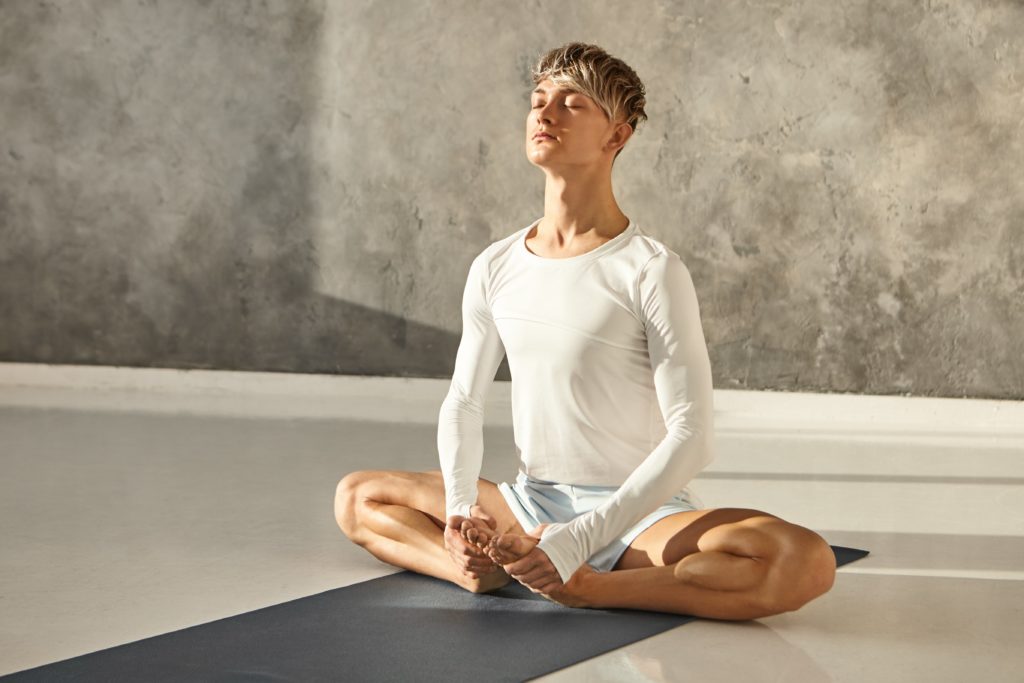
Baddha Konasana allows you to rejuvenate after a long day and restores your muscle energy. The posture also works on your core and improves your digestive functions.
5. Paschimottanasana
Paschimottasana is a forward-bending Yoga posture that adequately stretches all your body muscles. The pose is a great way to relax your body and loosen your muscles.
To perform Paschimottanasana
- Sit straight, extend your legs in the front, and keep a straight back.
- Touch your fingertips to the floor on either side of your hips and curl your toes towards the navel.
- Press your heels and fingertips firmly against the floor as you bend forward from your waist.
- Bend forward till your chest is close to your thighs and your head is near the knees.
- Glide your hands forward to clasp your ankles, heels, or toes (whichever seems comfortable).
- Continue regular breathing throughout Paschitmottanasana. Relax your body after staying in the posture for 15-30 seconds.
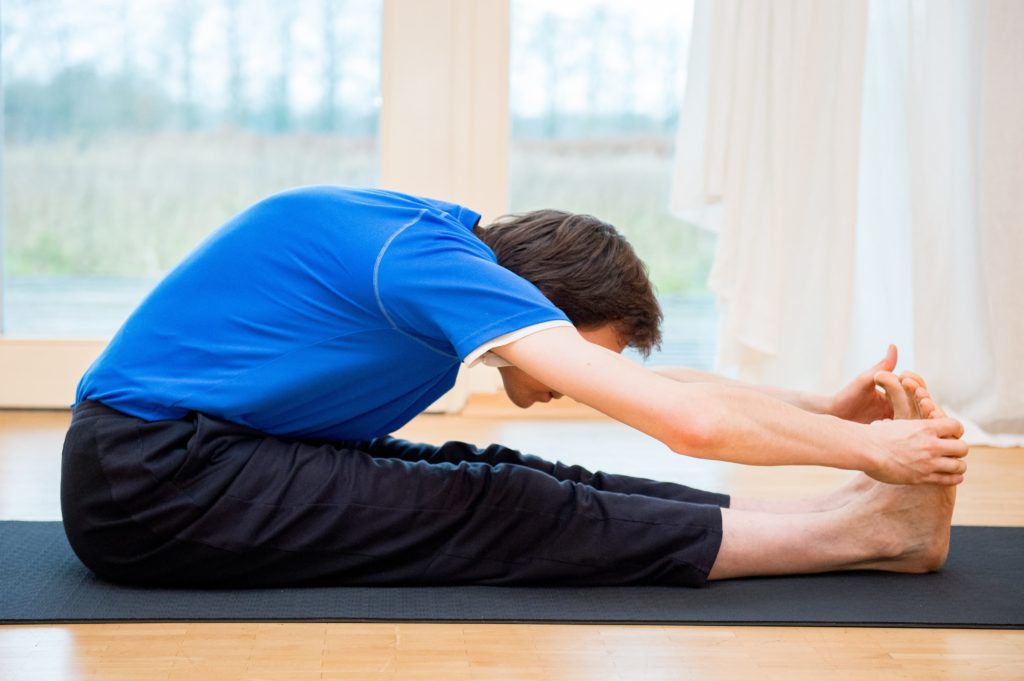
Paschimottanasana offers relief from chronic tension headaches and relaxes the brain cells. The Yoga posture is an excellent way to relieve anxiety, negative thoughts, and unnecessary emotional baggage.
Yoga postures are aimed at stretching and toning your body. Please remember that every person is built differently and has different physical strengths. Do not exert your body beyond your limits while performing any Yoga pose, as there is always a risk of injuries. (CLICK HERE to learn how you can avoid injuries during Yoga)
Yoga helps you to unwind, relax, and replenish your energy. Practicing Yoga daily is almost as satisfying as enjoying tea or coffee in peace. So why wait longer? Take the plunge today and immerse yourself into the ocean of Yoga to enjoy its benefits.







